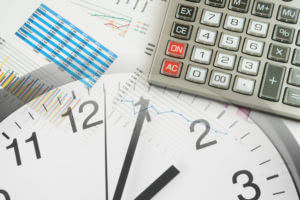Content

If you use the Standard VAT Scheme, you may also qualify for bad debt relief which means you can reclaim the VAT you’ve already paid to HMRC. If you use the VAT Cash Accounting Scheme, VAT calculates based on the payments you receive or make. Under this method, you can deduct bad debts that are How to Write Off Bad Debt partly or completely worthless. Partly worthless means that the debtor paid part of what they owe. Completely worthless means that the debtor has paid nothing. For both, you can expect that you will not receive any owed money. You can only deduct the amount you charged off on your books.
We provide NetSuite implementation, developer, integration, and customization services to ensure that you have a long-term solution that is tailored to fit your systems, people, and processes. In theAccount field, enter or select your Bad Debt Expense account. You can prove your loan recipient can’t pay you back by showing bank statements or bankruptcy filings . For more information on the above terms, read about the direct write-off method here and the allowance method here. For details, see Selecting a Customer in Accounts Receivable. This post is to be used for informational purposes only and does not constitute formal legal, business, or tax advice.
How Does A Bad
No matter how carefully and thoroughly you screen your customers or manage your accounts receivable, you will end up with bad debt. Bad debt is the money that a customer or customers owe that you don’t believe you will be able to collect. Being unable to repay a personal loan means the borrower’s cash flow is lower than the amount of the loan. This is applicable when you have already accounted for VAT but your customer defaults on full or partial payment. Specific criteria and conditions differ from country to country, but in general tax authorities allow companies to claim back the already paid output tax on bad debts.

Write-offs of bad debts do not include credits for return of merchandise, price adjustments for faulty or damaged items, or warranty refunds. Those should be handled with credit notes, as described in another Guide.
If the client files for bankruptcy, the full amount of the debt may be unrecoverable. You'll also set up a receivable aging schedule to estimate the bad debts. Select Save and Close.The uncollectible receivable now appears on your Profit and Loss report under the Bad Debts expense account. If you haven't already, create a non-inventory item as a place holder for the bad debt. This isn't a real item, it's just to balance the accounting. For example, the bad debt insurance cost for a company with an annual turnover of €10 million in a low-risk market will be around €1,500 a month for a standard trade credit insurancepolicy. However, this amount varies depending on the chosen type of coverage and sector.
Effects Of Bad Debt On A Company
Additionally, should a student subsequently default on a repayment agreement, the student will immediately be placed on hold and the debt will be turned over to collections. Accounts outstanding two years or more at the end of the fiscal year are deemed uncollectible and will be submitted to the UHV Comptroller who will submit to the BOR for write-off. In most cases, you can reclaim tax paid on bad debts; and it’s a form of bad debt relief applied to both accounts receivable and accounts payable. Fundamentally, like all accounting principles, bad debt expense allows companies to accurately and completely report their financial position. At some point in time, almost every company will deal with a customer who is unable to pay, and they will need to record a bad debt expense. A significant amount of bad debt expenses can change the way potential investors and company executives view the health of a company. The original journal entry for the transaction would involve a debit to accounts receivable, and a credit to sales revenue.
- Banks prefer to never have to write off bad debt since their loan portfolios are their primary assets and source of future revenue.
- The University may still have a claim against the debtor and can still seek legal remedy (e.g., sue for collection in a court of law).
- Therefore, it is the responsibility of the University to maintain adequate records regarding financial obligations (i.e., debts) owed to the University.
- A list of customers balances that were written off during the selected date range will be displayed.
- You will only need to complete this step the first time you enter a bad debt.
Next time you decide to lend money to a friend or family member, make sure you cover all your bases so you can claim a tax write-off if the borrower can’t pay you back. Getting a signed loan agreement, charging interest, and sending payment reminders is a good start. The IRS only lets you deduct a bad debt from your taxes when there’s no way someone can pay you at all. For example, the borrower may have filed for bankruptcy or simply does not have enough money to pay you. In the Reverse G/L box, enter the appropriate reverse general ledger number for your adjustment. If you’re not using general ledger, you can just accept the default reverse account. Even if you have a judgment against a client, it doesn’t mean you’ll be able to collect payment.
Understanding The Benefits Of Bad Debt Insurance
As you can see, there are two prominent methods one can employ when attempting to write off bad debt. The first method, the direct write off, is simpler but not appreciated as often. https://www.bookstime.com/ As the person responsible for handling this bad debt, it is your responsibility to enter the loss into your Bad Debts Expense book and credit it to your Accounts Receivable.
- The amount does not have to equal the customer's current balance.
- When a nonperforming loan is written off, the lender receives a tax deduction from the loan value.
- In 2015, after repeated collection attempts, C determines $20,000 of the receivable is uncollectible and writes off this amount on the business's books.
- Harold Averkamp has worked as a university accounting instructor, accountant, and consultant for more than 25 years.
- In addition, this accounting process prevents the large swings in operating results when uncollectible accounts are written off directly as bad debt expenses.
- Accounts uncollectible are loans, receivables, or other debts that have virtually no chance of being paid, due to a variety of reasons.
- Being unable to repay a personal loan means the borrower’s cash flow is lower than the amount of the loan.
If you sell to small businesses, which are prone to cash flow issues and bankruptcy, you may end up with a bad debt. After making a reasonable effort to collect from a customer, business owners can write off bad debts on the accounting records. Business bad debts can also take the form of loans to suppliers, clients, employees, and distributors. Additionally, a guarantor is allowed a business bad debt deduction for any payment made in the capacity as guarantor if the reason for guaranteeing the debt was business. Here, the guarantor's payment results in a loan to the debtor, and the taxpayer is allowed a bad debt deduction once the loan becomes partially or totally worthless (Regs. Sec. 1. A bad debt is an unpaid loan you’ll never receive payment on. This expense can become a tax deduction in the right circumstances.
Writing Off Bad Debt: Allowance Method Or Direct Write
Under accrual accounting, business owners recognize revenue and create a receivable asset when they make the sale, not when they receive the cash. To keep your accounting records accurate, you'll need to remove the accounts receivable asset from your books and increase expenses in the amount of the revenue you recognized. The taxpayer may claim a deduction for any portion of the debt, up to the amount actually written off its books during the year. The requirement to record a book charge-off means the portion charged off must no longer appear as an asset in the business's financial records or on its financial statements. However, it does not mean the business must cancel the debt or notify the debtor of the charge-off. Thus, the taxpayer may still continue its collection efforts while claiming a tax deduction for a partially worthless debt.

Remember that your bad debts will influence your net income and you may need to look at how you handle your financial obligations if you have too many outstanding accounts in your books. Banks prefer to never have to write off bad debt since their loan portfolios are their primary assets and source of future revenue. Additionally, bad debt expense does comes with tax implications. Reporting a bad debt expense will increase the total expenses and decrease net income. Therefore, the amount of bad debt expenses a company reports will ultimately change how much taxes they pay during a given fiscal period. The accounts receivable aging method groups receivable accounts based on age and assigns a percentage based on the likelihood to collect.
Bad Debt Expense
The bad debt letter should be succinct, written on your company letterhead, include your signature, and suggest how to resolve the matter in a timely fashion. Learn more by reading our article on how to collect late payments, that includes tips to write bad debt letters. You’ve written off the debt in your day-to-day accounts and transferred it to a separate bad debt account. Bad debt expense is an expense that a business incurs once the repayment of credit previously extended to a customer is estimated to be uncollectible. Bad debt is an expense that a business incurs once the repayment of credit previously extended to a customer is estimated to be uncollectible. In the direct write off method, there is no contra asset account .
- IRS requires small businesses to use the direct write off method to calculate these deductions.
- A debit entry for the same amount is entered into the "Allowance for Doubtful Accounts" column to balance the balance sheet.
- When there is a bad debt, you will credit accounts receivable and debit allowance for doubtful accounts.
- If you use the Standard VAT Scheme, you may also qualify for bad debt relief which means you can reclaim the VAT you’ve already paid to HMRC.
- You'll also set up a receivable aging schedule to estimate the bad debts.
When a business does not expect to recover a debt, the debt becomes bad and is written off. Full BioMichael Boyle is an experienced financial professional with more than 10 years working with financial planning, derivatives, equities, fixed income, project management, and analytics. This website is using a security service to protect itself from online attacks.
As a business decides that it has little or no chance of collecting a debt, it will write it off as a loss. What it means is that the business doesn’t count the money owed to them as an asset of the company anymore, and it will reflect on the profit-and-loss statement of a business as a loss. But, the write off method allows revenue to be expensed whenever a business decides an invoice won’t be paid. This makes a company appear more profitable, at least in the short term, than it really is. You also need to prove that you’ve made a genuine effort to collect the debt. Signing a loan agreement, sending payment reminders, and offering numerous ways to reclaim payment are just a few ways to show you’ve made a genuine effort to collect your debt .
Topic No 453 Bad Debt Deduction
After all, unpaid invoices can wreak havoc on your business finances. Having outstanding unpaid invoice means you’re not getting paid for the products or services you provided. If your business isn’t paid for goods or services provided, you’ll likely experience cash flow problems. Without this capital, you can’t make investments in a timely manner that will keep the business growing. Instead of directly writing off the bad debts account from the books, an allowance is first recorded and is typically done for receivables with material amounts. Instead, place the formerly bad debt back into your assets with a reverse journal entry. This time, debit the asset account where the debt was lodged and credit Bad debts.
Bad debt is sometimes called uncollectible debt, worthless debt, doubtful accounts, or uncollectible accounts. Debt that cannot be recovered or collected from a debtor is bad debt.
- Thus, retaining a copy of the bankruptcy notice should support at least a partial reduction in the value of a receivable or other noncollateralized debt due from the bankrupt business.
- Select Save and Close.The uncollectible receivable now appears on your Profit and Loss report under the Bad Debts expense account.
- The benefit of this method is that you accrue for bad debt at the time of the sale.
- Doubtful Debt represents an expense that reduces the total accounts receivable of a company for a specific period.
At the end of the accounting period for the year 2020, Company X has estimated that 20% of their Accounts Receivable balance will become uncollectible based on the company’s previous history. The Direct Method directly records bad debts against the receivable account. Scroll down the chart until you find the Account for which you would like to view the Bad Debts Report. In the Action column of the bad debts account, select Run report. It’s an effective safeguard against bad debt and provides confidence to trade.
In the direct write off method, a small business owner can debit the Bad Debts Expense account and credit Accounts Receivable. One method, the direct write-off method, should only be used occasionally, while the allowance method requires you estimate bad debt you expect before it even occurs.
Step 5: Apply The Credit Memo To The Invoice
Under the direct write off method, when a small business determines an invoice is uncollectible they can debit the Bad Debts Expense account and credit Accounts Receivable immediately. This eliminates the revenue recorded as well as the outstanding balance owed to the business in the books. This means that when the loss is reported as an expense in the books, it’s being stacked up on the income statement against revenue that’s unrelated to that project.
What Is A Bad Debt Provision?
The percentages will be estimates based on a company’s previous history of collection. The income statement will account for the bad debts expense nearer to the time the sale or service was granted. For more information on nonbusiness bad debts, refer to Publication 550, Investment Income and Expenses. For more information on business bad debts, refer to Publication 535, Business Expenses. Method to deduct business bad debts as they become partially or totally worthless. For debts not recorded on student accounts, the department will be instructed on the proper journal entry to record the write-off in the general ledger.
While the direct write-off method is the easiest way to eliminate bad debt, it should be used infrequently and with caution. However, people dealing with personal loans use a different technique. The IRS considers nonbusiness bad debt from personal loans a type of short-term capital loss. When invoices you send in QuickBooks become uncollectible, you need to record them as a bad debt and write them off.